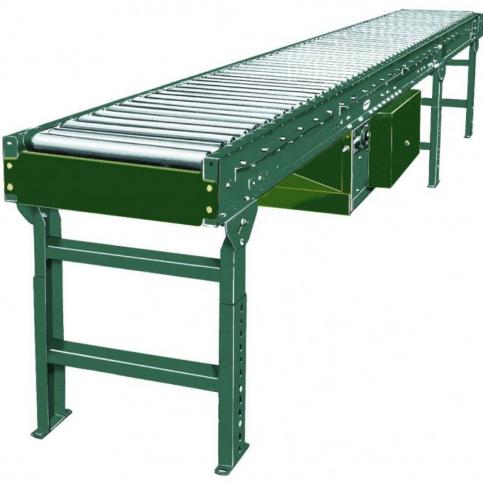
Pallet Conveyors: Choosing the Best Option for Your Applications
Pallet conveyors are a key part of many large warehouses and facilities. Pallets are used to organize and separate large products or large quantities of products. The pallets are then loaded onto pallet conveyors and transported to their intended destination within a facility or loaded for shipping and delivery.
There are three main types of pallet conveyors that are commonly used. While they all perform the same basic function, you will need to choose the right kind of pallet conveyor to fit your specific applications. On top of this, optional customization and accessorizing will further improve the efficiency of your conveyor system and optimize its capabilities for your specific needs.
The three types of pallet conveyors are gravity roller conveyors, chain-driven live roller conveyors, and drag chain conveyors.
1. Gravity Roller Conveyor
Gravity is the operating principle behind this type of conveyor. Because it is unpowered and reliant on gravity to transport pallets along its rollers, this type of conveyor has to be pitched slightly to facilitate this process. Consult the experts at Norpak Handling to determine the amount of pitch required for your applications, as this is dependent on various factors including the types of products being transported and the weight of the products.
2. Chain Driven Live Roller Conveyor
Unlike the gravity roller conveyor, this type of conveyor is powered. As such, it is more suitable for the transportation of heavier pallets and does not need to be pitched. It is a much more versatile option and is heavily modifiable to suit your specific needs. Configurable factors to consider include length, width, and the amount of space in between rollers.
3. Drag Chain Conveyor
This type of conveyor is also known by a different name: multi-strand conveyor, which better describes its operating style. It consists of parallel strands of roller chains supported by rails. Products are placed on top of the chains and like the chain-driven live roller conveyor, a motor powers the conveyor, putting the chains into motion. This type of conveyor is recommended for applications that do not require much starting and stopping.
Choosing among these three options is not just about selecting the style you like most. Make sure you have determined the specifications of the bottom surfaces of your pallets as this will affect the kind of conveyor system they can work with. If the bottom boards of your pallets run parallel to the direction of travel, then conveying on rollers is best. If the bottom boards run across the width of the conveying surface, then the pallet may drop between the rollers and perhaps cause the system to stall. As such, these pallets would be best conveyed on drag chain or chain conveyors.
As mentioned previously, it is also important to consider adding further capabilities to your pallet conveyors. Some of the more common functions needed in pallet conveyors include:
- Accumulation of pallets
- Start and stop functions
- Zone control, including loading zone controls and zone delays
- Automated product sensing
- Loading zone controls
- Transferring pallets from one line to another
- Rotating pallets to change the direction of flow
Many of these capabilities are software-based and can be found built into your conveyor. A good example is the Hytrol DCEZ series of conveyors which utilize EZLogic Zone Controllers, EZLogic Accumulation Systems, and EZDrive Systems to achieve most of these functions.
For hardware-based functionalities, you will need to acquire the right conveyor accessories from suppliers such as Norpak Handling. Examples of this include turntables to help rotate unit loads and transfer modules or plates to help transfer products from one line to another.
To ensure you get the right pallet conveyor for your needs, you will need to determine the amount of automation you require, the kind of pallets and products you are conveying, the operating mode that best fits your applications, and the exact kind of capabilities you need your conveyor system to possess.
As such, extensive consultation with a material handling expert is required to help you achieve the best solution. The professionals at Norpak Handling have an incredible experience with all kinds of industries and material handling solutions, with the dedication to ensure your needs are met. Contact us today for more information on our services!









